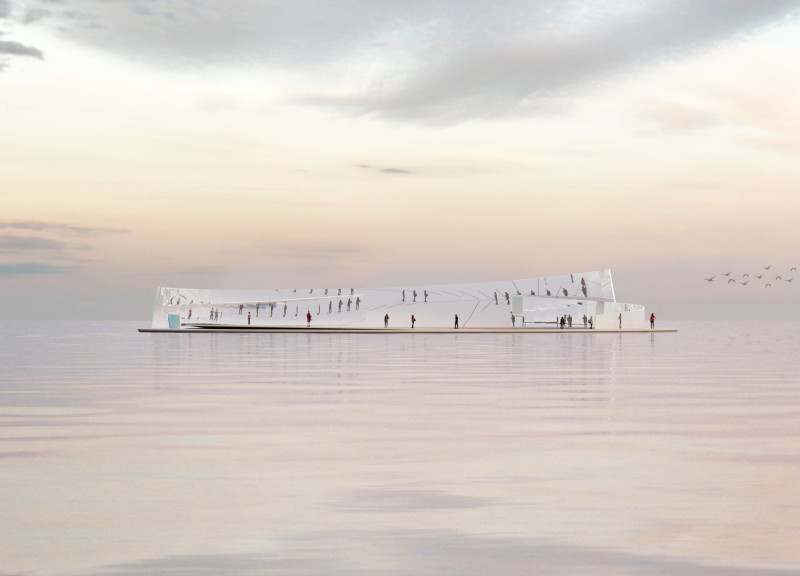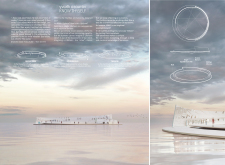5 key facts about this project
The pavilion’s structure features an organic form that appears to float above a body of water, employing gentle curves and angles to create a sense of fluidity. This design strategy fosters an open relationship with the surrounding environment, inviting visitors to engage with both the pavilion and the natural landscape. The building integrates reflective surfaces and transparency to enhance the experience of self-exploration, signaling the importance of visibility and concealment in understanding personal identity.
Unique Structural Features and Materiality
One defining characteristic of "Know Thyself" is its use of varied materials, including glass, concrete, and metal. Glass serves as the primary medium for reflective walls, allowing visitors to confront their images and thoughts. This transparency not only connects the interior with the exterior but also embodies the theme of vulnerability in self-examination. Concrete offers structural support while providing a durable base that contrasts with the lightweight qualities of glass. Metal elements are incorporated for structural framing and fine detailing, ensuring longevity and maintaining a modern aesthetic.
The spatial organization promotes a thoughtful journey through the pavilion, guiding visitors from entry to reflection zones. Notable features include dedicated areas for self-reflection equipped with mirrors, as well as a central equilibrium disk designed for community activities. This configuration encourages both solitary contemplation and group engagement, fostering meaningful connections between visitors.
Engagement and Interaction
"Know Thyself" focuses on creating an engaging environment through its architectural design. Visitors are encouraged to move freely within the pavilion, promoting exploration and interaction. The careful placement of mirrors and reflective zones allows for intimate moments of self-discovery, while the equilibrium disk inspires collective experiences. This duality of purpose reinforces the architectural intent of balancing individual introspection with communal understanding.
The design ultimately exemplifies an innovative approach to architecture, where structure and philosophy converge to create a space dedicated to human experience. For those interested in delving deeper into the architectural dimensions of the project, it is recommended to examine the architectural plans, sections, and designs that further illustrate its spatial concepts and functional elements. Exploring these elements will provide a comprehensive understanding of the architectural ideas underpinning the Pavilion of Humanity.























